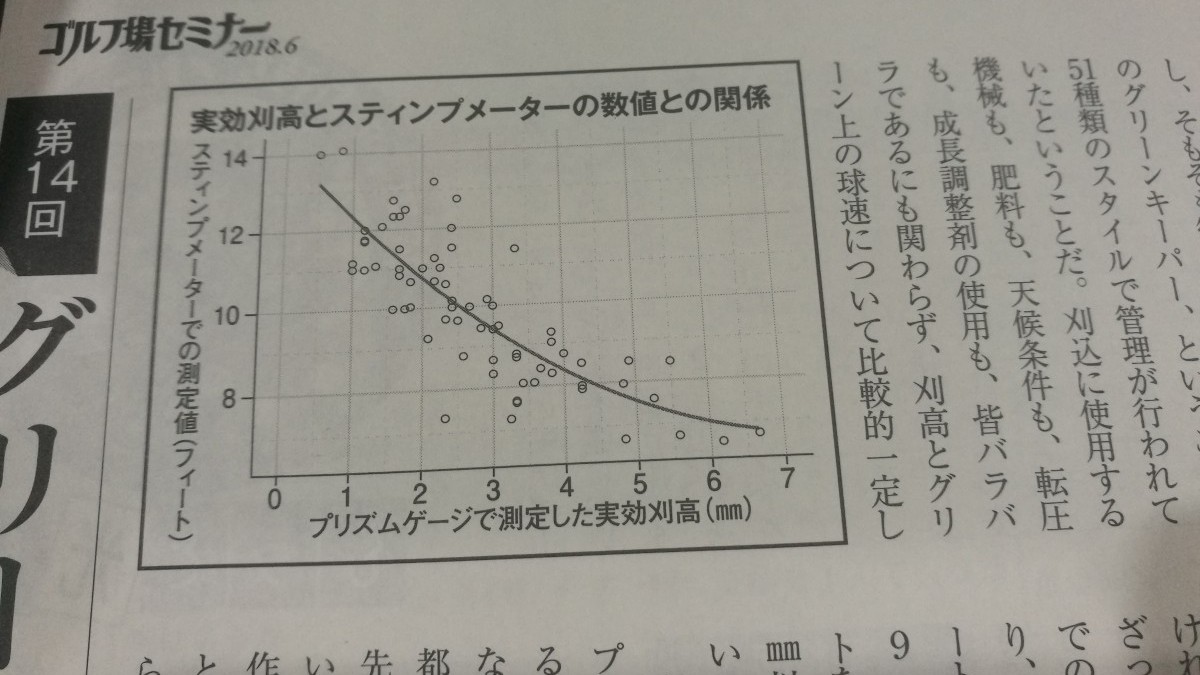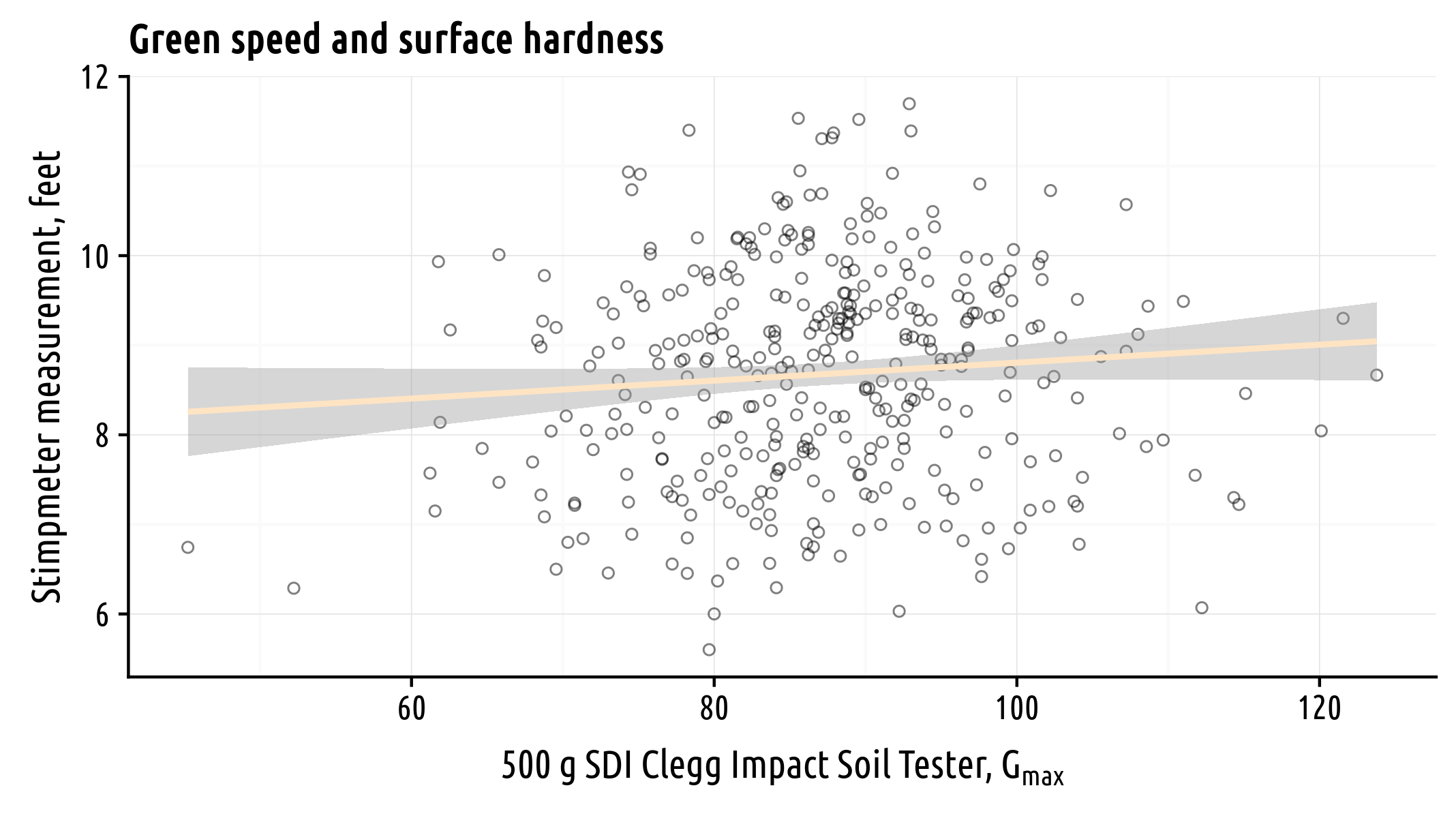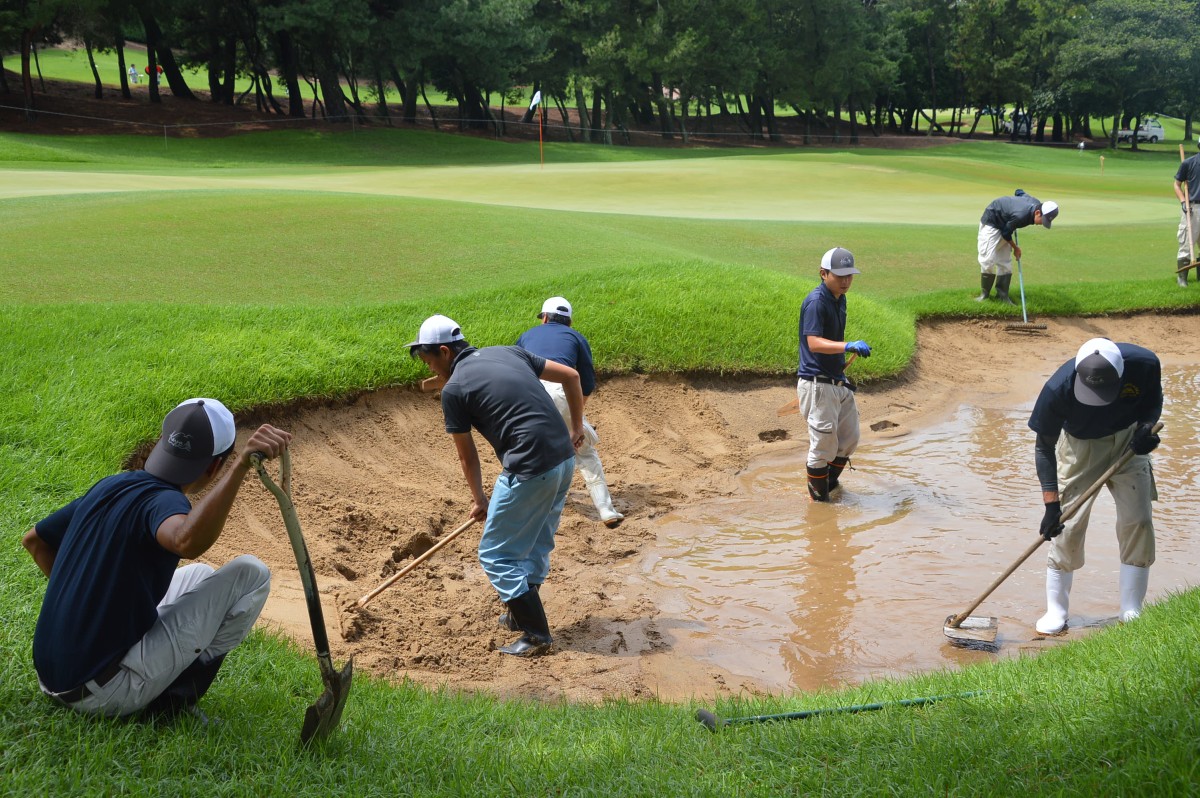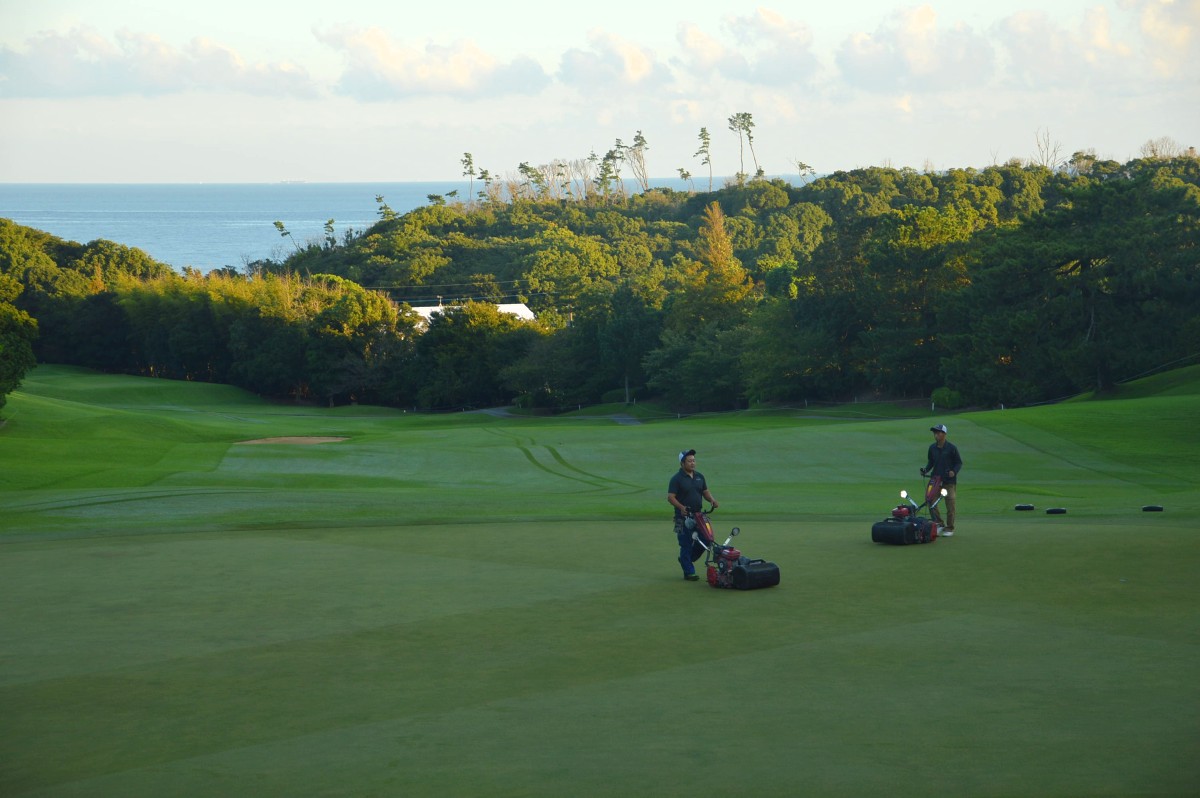Last week I had a couple conversations about green speed.
Green speed and surface hardness
My column in the June 2018 issue of Golf Course Seminar magazine discusses the relationship between effective mowing height and green speed.

Eric Reasor collected a fascinating set of data on green speed and effective mowing height measured with a prism gauge. With green speeds from less than 7 to more than 14 feet, and effective mowing heights from less than 1 to more than 6 mm, it is clear that the length of the grass blades is a primary influence on green speed.
“What about surface hardness and green speed?” That’s a question I was asked last week. These two things aren’t related. I looked at data from almost 400 putting greens from non-tournament conditions and made this chart.

Of course one can find a relationship between firmness and speed by carefully selecting data; for example, tournament conditions tend to be faster green speeds and firmer conditions. But it is not a cause and effect relationship.
Green speed and clipping volume, again
Chris Tritabaugh has been looking at green speed and clipping volume measurements, and a number of people have pointed out that it is obvious that lower clipping volumes will tend to have a faster green speed. I can add a few more details to this.
First, I’ve always thought it obvious that this must be the case, with no need for data to be certain that when clipping volume goes up, the speed must go down. You may recall that Bill Kreuser had a nice dataset with no correlation between clipping yield and green speed.
I couldn't find any correlation between clipping yield & green speed. Other factors more important. Measured 3x/day for 60 days over 2 years pic.twitter.com/gkVBUe7QMK
— Bill Kreuser (@UNLturf) June 25, 2017
I’ve wanted to explore this further, so I’ve continued to look at clipping volume and green speed.
Here’s a note about green speed at clipping volume at the recent KBC Augusta tournament in at Keya GC in Japan. If you followed the tournament with the #KBCオーガスタ hashtag you would have seen that there was lots of rain during the tournament week (and a lot of photos of the HKT48 performance).
One thing I’ve noticed when measuring clipping volume is that it tends to be consistent when turf is intensively maintained. During the tournament week, even with considerable variation in rain amounts and sunshine and temperature, the average clipping volume per mow ranged from 3 to 5 mL/m2.

Another thing I’ve noticed is that when the clipping volume is consistent, the green speeds tend to be consistent too. I think this has to do with the effective mowing height mentioned in the first section of this post. During the tournament week, there was a lot of rain, and the morning maintenance included mowing on 6 days and rolling on 4 days.



How consistent? On the two days during tournament week when the greens were mown but were not rolled, the average green speed between days was within 0.6 inches (1.5 cm). On the four days during tournament week when the greens were mown and rolled, the average green speeds between days were within a range of 3.4 inches (8.6 cm).